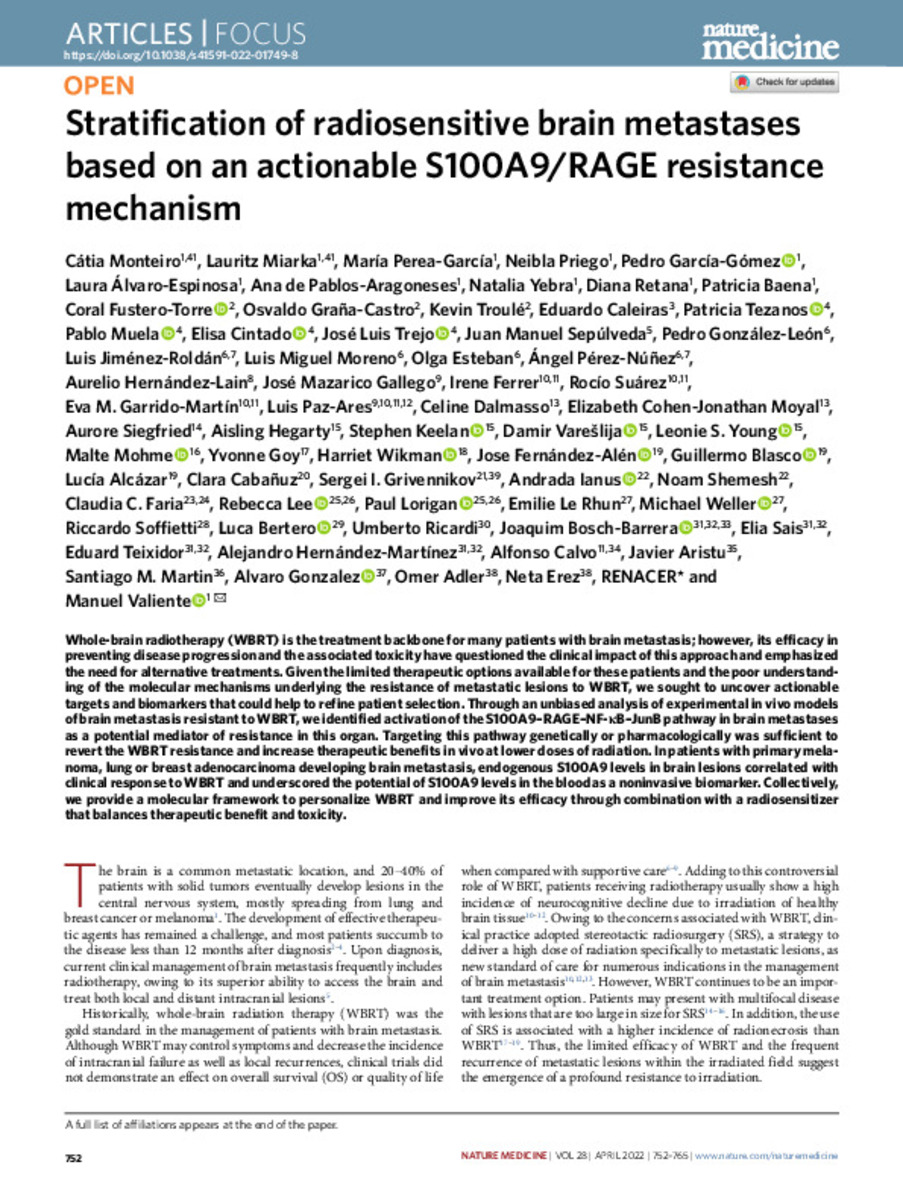Stratification of radiosensitive brain metastases based on an actionable S100A9/RAGE resistance mechanism
Palabras clave :
Materias Investigacion::Ciencias de la Salud::Radiología
Radiosensitive brain metastases
S100A9/RAGE
Whole-brain radiotherapy
WBRT
Fecha de publicación :
2022
Editorial :
Nature Research
Nota:
This article is licensed under a Creative Commons
Attribution 4.0 International License, which permits use, sharing, adap-
tation, distribution and reproduction in any medium or format, as long
as you give appropriate credit to the original author(s) and the source, provide a link to
the Creative Commons license, and indicate if changes were made. The images or other
third party material in this article are included in the article’s Creative Commons license,
unless indicated otherwise in a credit line to the material. If material is not included in
the article’s Creative Commons license and your intended use is not permitted by statu-
tory regulation or exceeds the permitted use, you will need to obtain permission directly
from the copyright holder. To view a copy of this license, visit http://creativecommons.
org/licenses/by/4.0/.
© The Author(s) 2022
Cita:
Monteiro, C. (Cátia); Miarka, L. (Lauritz); Perea-García, M. (María); et al. "Stratification of radiosensitive brain metastases based on an actionable S100A9/RAGE resistance mechanism". Nature medicine. 28, 2022, 752 - 765
Aparece en las colecciones:
Estadísticas e impacto
0 citas en

Los ítems de Dadun están protegidos por copyright, con todos los derechos reservados, a menos que se indique lo contrario.










